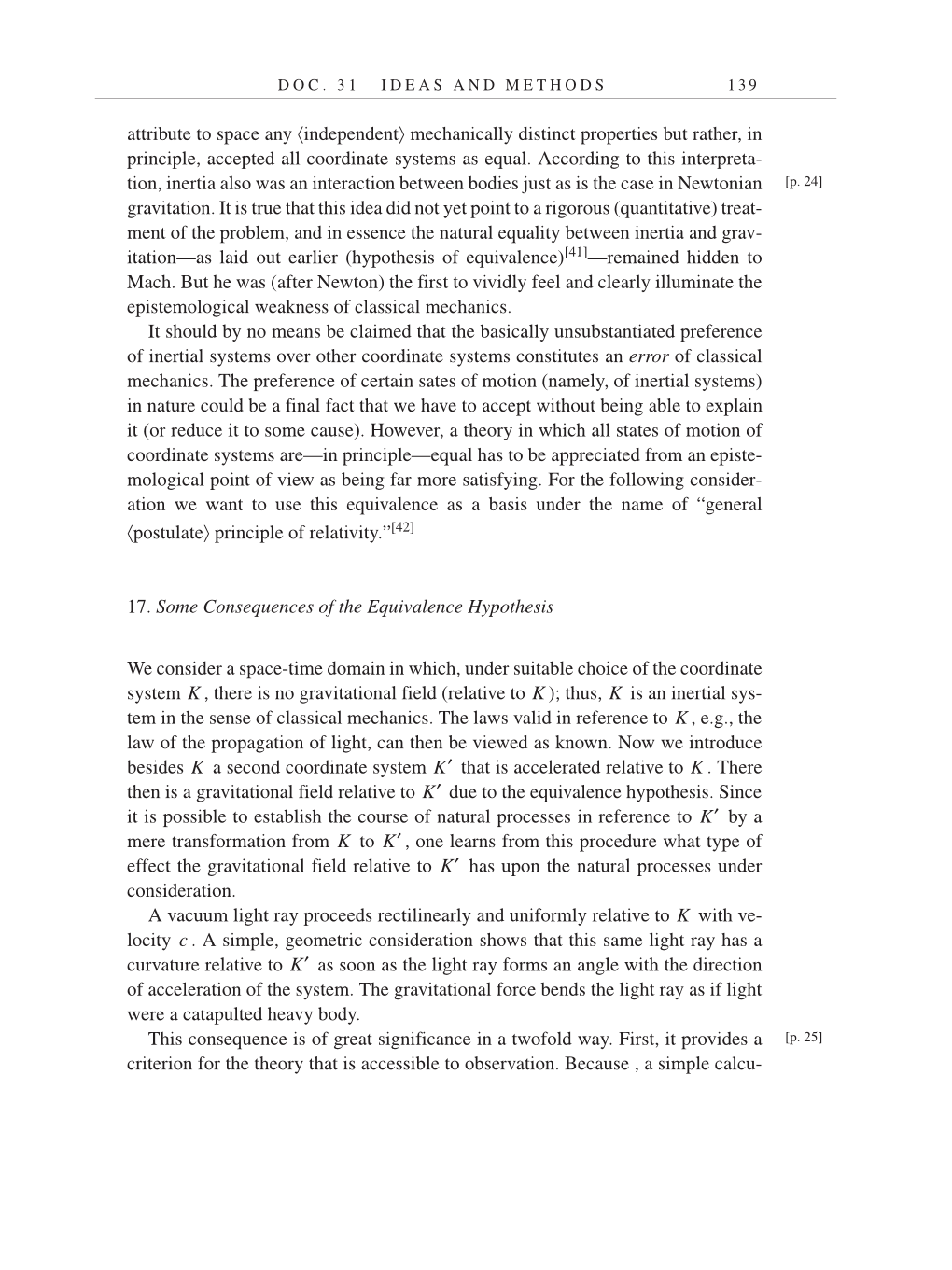D O C . 3 1 I D E A S A N D M E T H O D S 1 3 9
attribute to space any 〈independent〉 mechanically distinct properties but rather, in
principle, accepted all coordinate systems as equal. According to this interpreta-
tion, inertia also was an interaction between bodies just as is the case in Newtonian
gravitation. It is true that this idea did not yet point to a rigorous (quantitative) treat-
ment of the problem, and in essence the natural equality between inertia and grav-
itation—as laid out earlier (hypothesis of
equivalence)[41]—remained
hidden to
Mach. But he was (after Newton) the first to vividly feel and clearly illuminate the
epistemological weakness of classical mechanics.
It should by no means be claimed that the basically unsubstantiated preference
of inertial systems over other coordinate systems constitutes an error of classical
mechanics. The preference of certain sates of motion (namely, of inertial systems)
in nature could be a final fact that we have to accept without being able to explain
it (or reduce it to some cause). However, a theory in which all states of motion of
coordinate systems are—in principle—equal has to be appreciated from an episte-
mological point of view as being far more satisfying. For the following consider-
ation we want to use this equivalence as a basis under the name of “general
〈postulate〉 principle of
relativity.”[42]
17. Some Consequences of the Equivalence Hypothesis
We consider a space-time domain in which, under suitable choice of the coordinate
system , there is no gravitational field (relative to ); thus, is an inertial sys-
tem in the sense of classical mechanics. The laws valid in reference to , e.g., the
law of the propagation of light, can then be viewed as known. Now we introduce
besides a second coordinate system that is accelerated relative to . There
then is a gravitational field relative to due to the equivalence hypothesis. Since
it is possible to establish the course of natural processes in reference to by a
mere transformation from to , one learns from this procedure what type of
effect the gravitational field relative to has upon the natural processes under
consideration.
A vacuum light ray proceeds rectilinearly and uniformly relative to with ve-
locity . A simple, geometric consideration shows that this same light ray has a
curvature relative to as soon as the light ray forms an angle with the direction
of acceleration of the system. The gravitational force bends the light ray as if light
were a catapulted heavy body.
This consequence is of great significance in a twofold way. First, it provides a
criterion for the theory that is accessible to observation. Because , a simple calcu-
[p. 24]
K K K
K
K K′ K
K′
K′
K K′
K′
K
c
K′
[p. 25]
